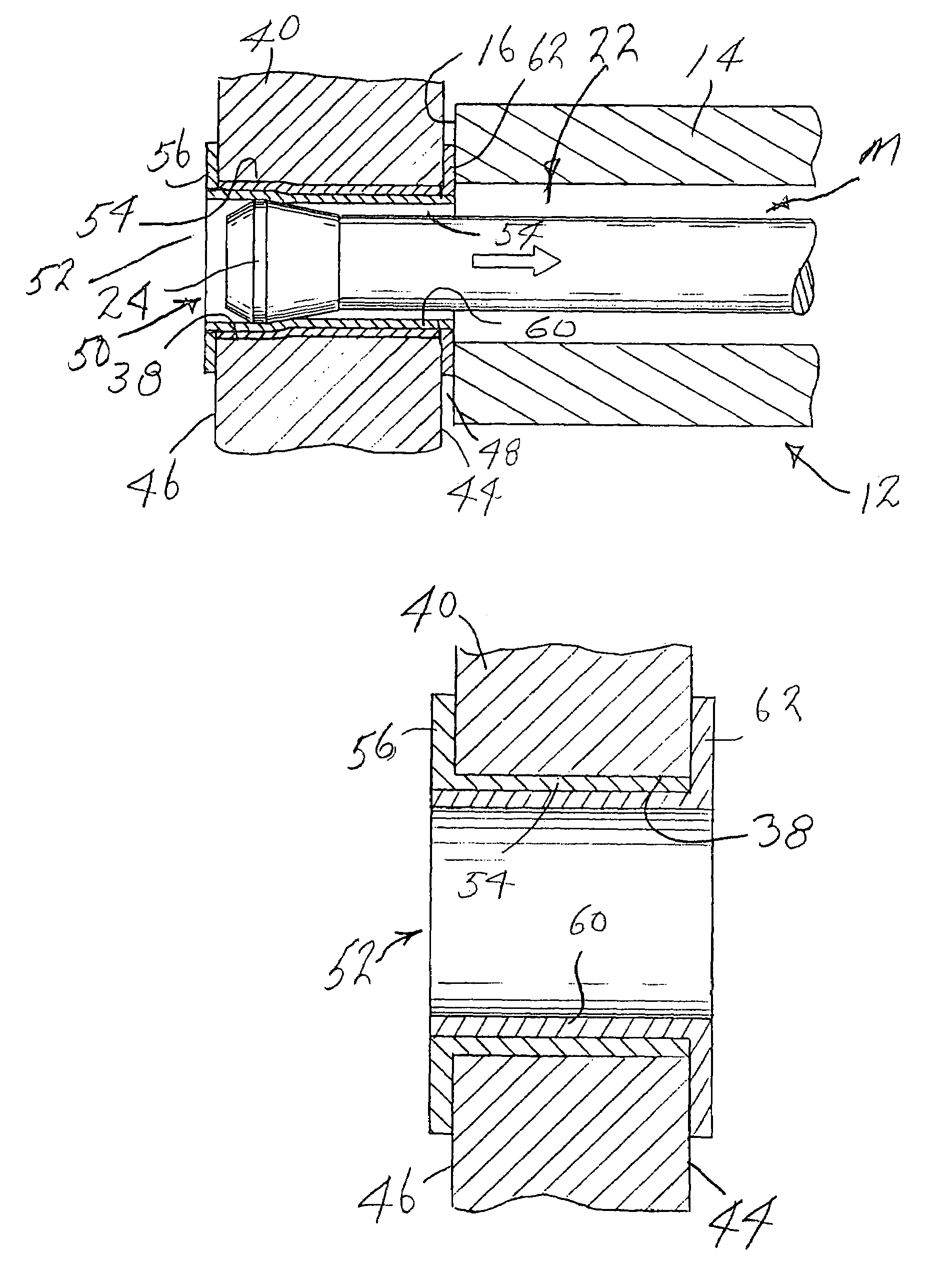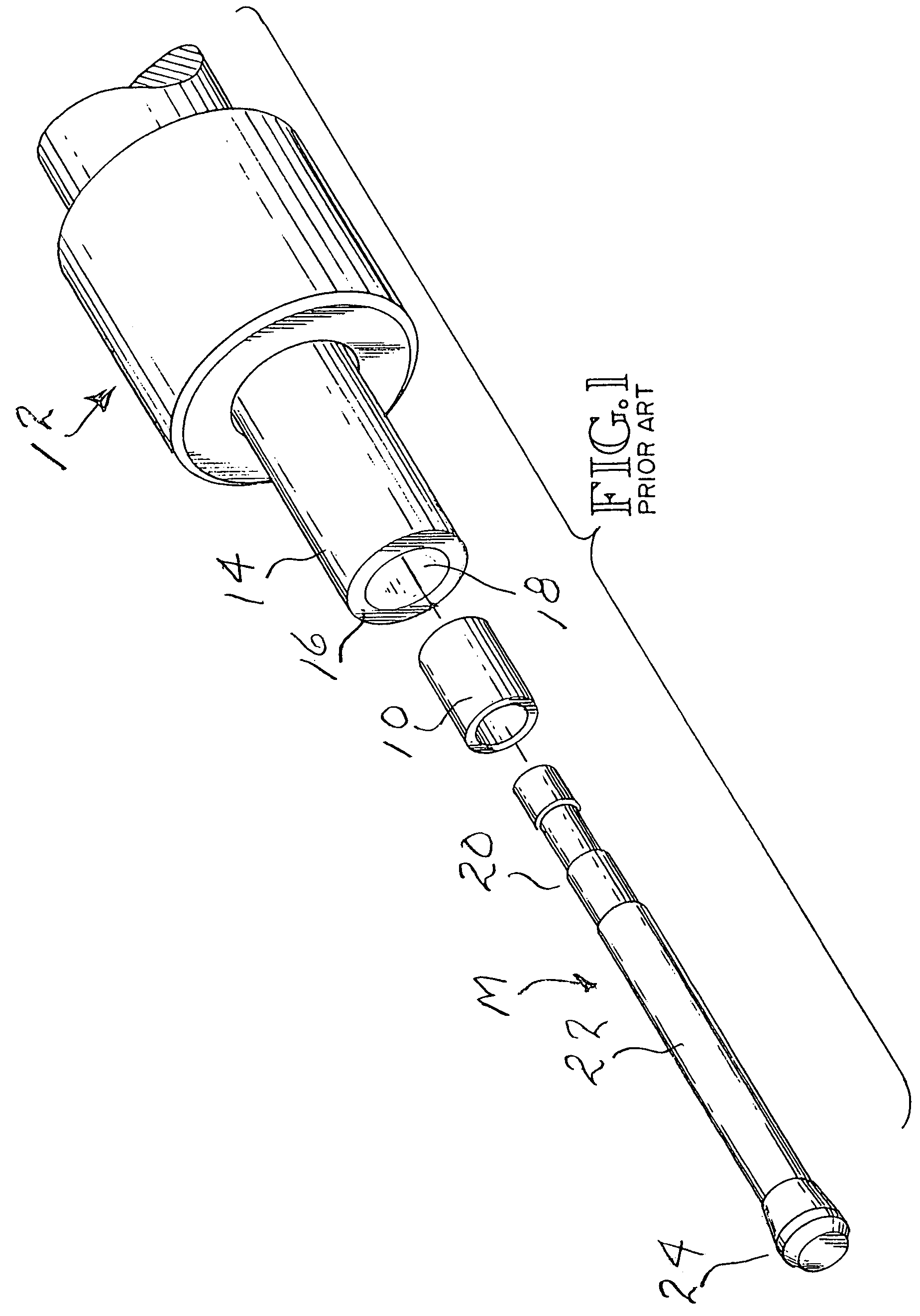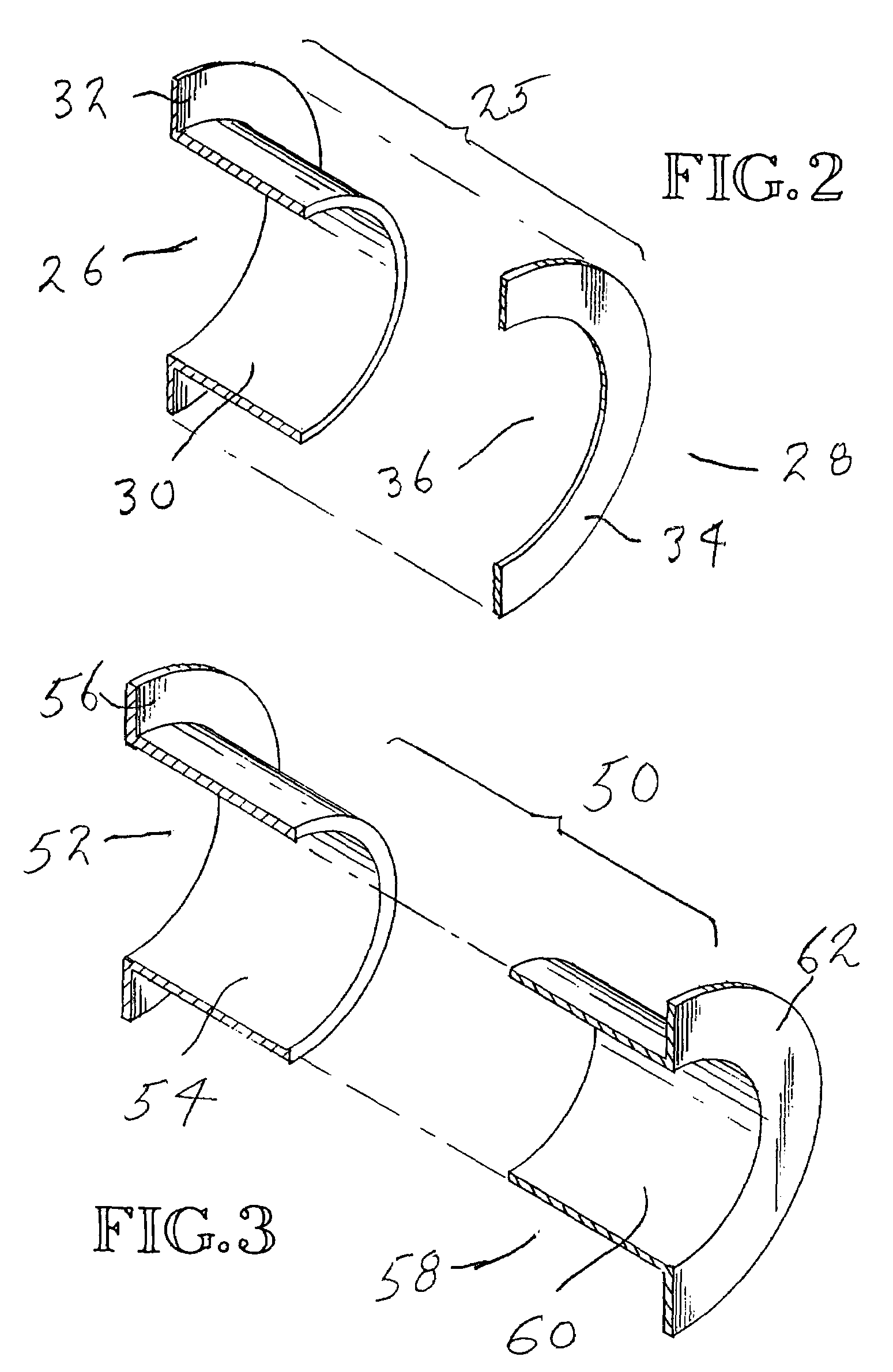Method of installing double flanged bushings
a technology of tubular bushings and flanges, which is applied in the direction of multi-purpose tools, manufacturing tools, mechanical equipment, etc., can solve the problems of face-to-face contact between the joined parts, see an axial load,
- Summary
- Abstract
- Description
- Claims
- Application Information
AI Technical Summary
Benefits of technology
Problems solved by technology
Method used
Image
Examples
first embodiment
[0041]FIGS. 2, 6–8 and 12 disclose the double flanged bushings of the present invention. This bushing 25 is composed of a first bushing part 26 and a second bushing part 28. Bushing part 26 comprises a tubular section 30 and a radial flange section 32. Flange section 32 is connected to one end of the tubular section 30. Tubular section 26 extends axially and radial flange section 32 extends radially. Bushing part 28 is a radial member 34 that includes a center opening 36. Preferably, but not necessarily, the radial length of member 34 substantially equals the radial length of flange section 32 measured from the outside diameter of the tubular section 30.
[0042]A through opening 38 is provided in a work member 40 to receive the bushing 25. An initial opening 38 is formed by use of a drill. The drilled opening is then reamed to provide a desired starting diameter. After reaming, the starting diameter is verified by use of a hole-diameter gauge. If the opening 38 is oversized, it must b...
third embodiment
[0051]FIGS. 4, 10 and 14 disclose the bushing. This bushing 66 has three parts. A tubular first bushing part 68 has an outside diameter and a length that correspond to the diameter and length of opening 38 in work member 40. The second bushing part 70 has a tubular section 72 and a radial flange section 74 at one end of the tubular section 72. It has an outside diameter substantially conforming to the inside diameter of bushing part 68. It has a length that is shorter than the opening 38 in work member 40. The third bushing part 76 has a tubular section 78 and a radial flange section 80 at one end of the tubular section 78. Preferably, bushing parts 70, 76 are alike. Preferably also, the tubular sections 72, 78 are substantially the length of tubular section 68 and the opening 38 in the work member 40.
[0052]Bushing 66 is installed in the following manner. Firstly, bushing part 68 is placed in the opening 38 in work member 40. Then, tubular section 72 of bushing part 70 is inserted i...
fourth embodiment
[0053]FIGS. 5, 8 and 15 show the bushing. This bushing 86 is composed of two bushing parts 88, 90 which are preferably identical in construction. Bushing part 88 has a tubular section 92 and a radial flange section 94 that is connected to one end of the tubular section 92. Bushing part 90 has a tubular section 96 and a radial flange section 98 that is connected to one end of the tubular section 96. The outside diameters of the tubular sections 92, 98 substantially conform to the diameter of the opening 38 in the work member 40. The tubular sections 92, 96 are both shorter than the opening 38 but, preferably, their combined lengths substantially equal the length of the opening 38 (FIG. 15). The tubular sections 92, 96 may have concentric end portions that form a lap joint where they meet. End part 92′ concentrically surrounds end part 96′.
[0054]The bushing 86 is installed in the following manner. The tubular sections 92, 96 are either installed separately or together into the opening...
PUM
| Property | Measurement | Unit |
|---|---|---|
| outer circumference | aaaaa | aaaaa |
| circumference | aaaaa | aaaaa |
| compressive residual stresses | aaaaa | aaaaa |
Abstract
Description
Claims
Application Information
 Login to View More
Login to View More - R&D
- Intellectual Property
- Life Sciences
- Materials
- Tech Scout
- Unparalleled Data Quality
- Higher Quality Content
- 60% Fewer Hallucinations
Browse by: Latest US Patents, China's latest patents, Technical Efficacy Thesaurus, Application Domain, Technology Topic, Popular Technical Reports.
© 2025 PatSnap. All rights reserved.Legal|Privacy policy|Modern Slavery Act Transparency Statement|Sitemap|About US| Contact US: help@patsnap.com



